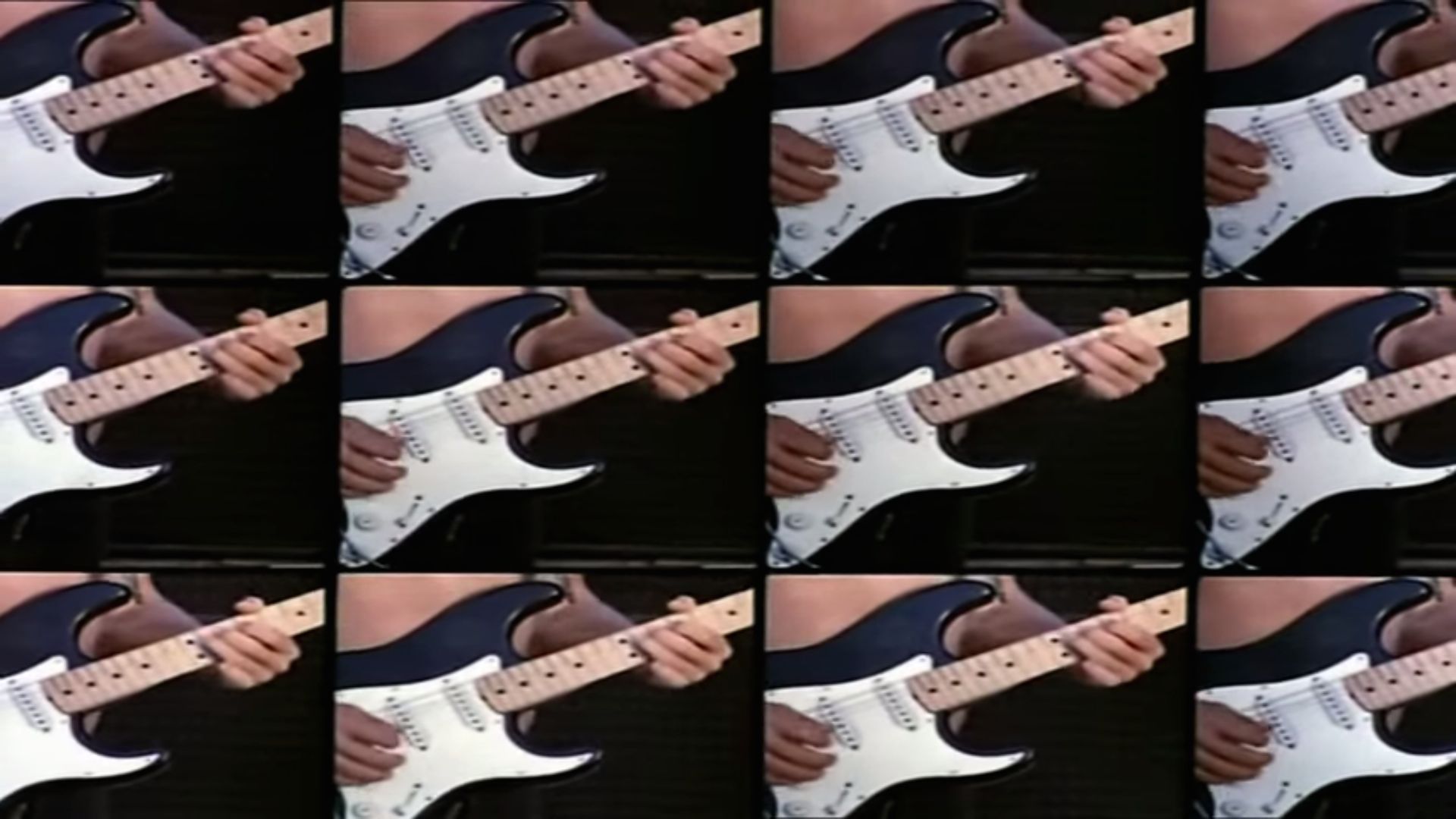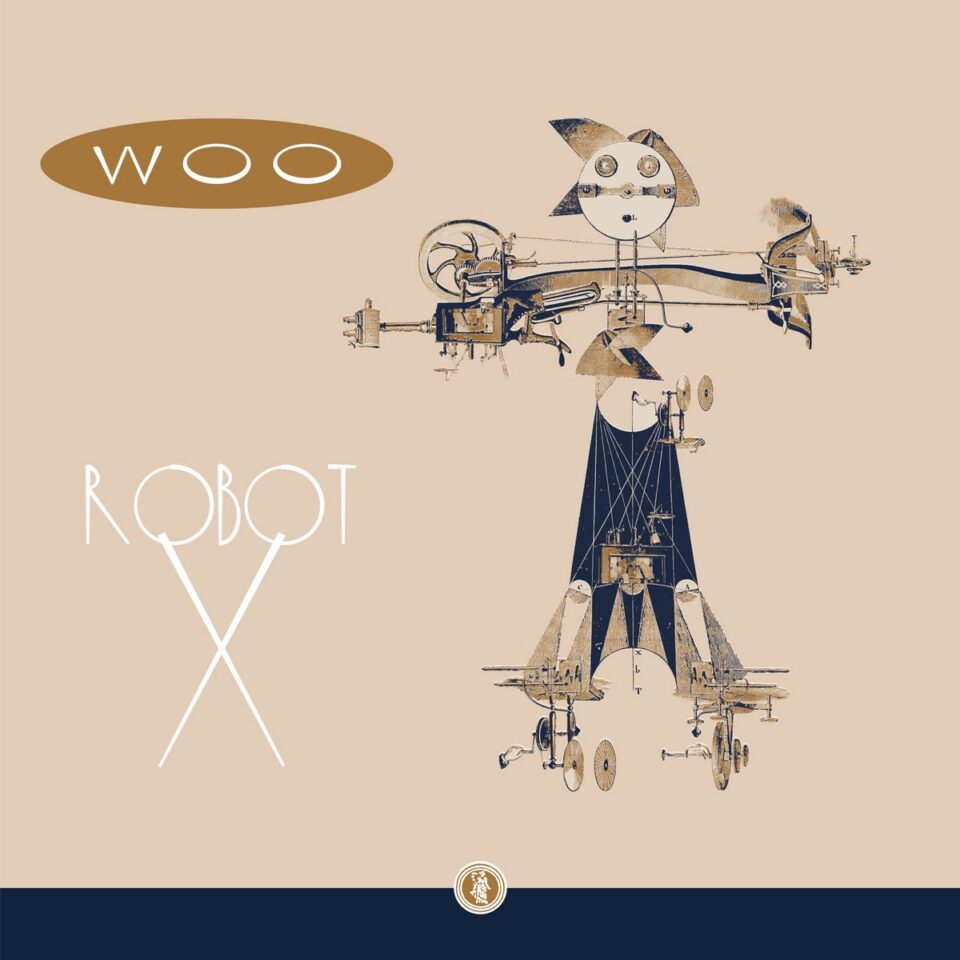Designed and first released in 1954, the Stratocaster is, well, an icon. It was there at the very beginning of rock and roll and has been an identifiable, irreplaceable part of popular music ever since—spanning blues, funk, punk, country, psych, and any other genre you might care to name.
Upon the 60th anniversary of the instrument, we’ve compiled a few of our favorite moments of the Fender Stratocaster across six decades.
http://youtu.be/kVGM86XIilw
Buddy Holly and The Crickets perform on The Ed Sullivan Show (December 1, 1957)
Off the heels of their debut album release, The Crickets stepped onto the stage of The Ed Sullivan Show for the first time. Frontman Buddy Holly took to the center of the stage with his Stratocaster in hand, giving many the first look of the Fender guitar since its release three years previous. With it, Holly and The Crickets breezed through their hit single “That’ll Be the Day” and their new song of the time, “Peggy Sue,” in a memorable performance for both the band and the guitar.
Dick Dale and “Miserlou” (1962)
With his handy Stratocaster and some Fender amps, Dick Dale took the Greek folk version of “Misirlou” and transformed it into his signature surf-rock single fit for the fast-changing rock scene of the ’60s. Though it lacks the reverb that eventually defined the genre, Dale’s energy (amplified by the electric guitar) makes it one of the most iconic surf-rock tracks. It’s no wonder Quentin Tarantino chose it for the iconic opening of Pulp Fiction, bringing the song back to popularity decades after it was first released.
Bob Dylan goes electric at Newport (July 24, 1965)
Easily one of the most controversial guitars of all time, Bob Dylan’s ’64 Sunburst Stratocaster was introduced to the world during the Newport Folk Festival in 1965 and, well, things didn’t go so smoothly. Following an acoustic performance, Dylan returned to the stage with the Paul Butterfield Blues Band for the first electric set of his career, effectively marking a sea change not just for himself, but for all of popular music. And though the extent of the uproar that started during “Maggie’s Farm” is still disputed, the mystique of that guitar is certainly not, as it sold for just under a million dollars in private auction last year.
John Lennon on “Nowhere Man” solo (1965)
While working on Help! in 1965, the Beatles sent out their roadie, Mal Evans, to pick out two Stratocasters for use in the sessions. Mal returned with two matching sonic blue ’61 Strats that were claimed by John and George, who both subsequently used them to ingrain the Fender sound into the legend of the mid ’60s Beatles recordings. For his part, John most notably used his Strat on the solo for Rubber Soul‘s “Nowhere Man,” where he and George joined forces to create what Paul referred to as being “among the most treble-y guitars I’ve ever heard on record.”
George Harrison with Rocky on “I Am the Walrus” (1967)
George’s sonic blue Strat, on the other hand, was used far more extensively than John’s. First appearing on “You’re Going to Lose That Girl” in 1965, the guitar was featured in over a dozen Beatles songs, including the lead parts on “Got to Get You into My Life” and “Fixing a Hole,” as well as the backwards guitar solo on “I’m Only Sleeping” (which took Harrison over nine hours to complete, according to engineer Geoff Emerick). After the completion of Sgt. Pepper’s in 1967, the guitar made the transformation into “Rocky” with the help of some DayGlo paint and nail polish from George’s then-wife Pattie Boyd. Unfortunately, the paint started “flaking off immediately,” but the psychedelic look is permanently preserved in the Magical Mystery Tour movie, where you can see it in the segment for “I Am the Walrus.”
Jimi Hendrix plays the “Star-Spangled Banner” at Woodstock (August 18, 1969)
Two years after Jimi Hendrix sacrificed one of his Strats in a blaze at the Monterey Pop Festival, he brought along a new Strat to his headlining act at Woodstock. In an electrifying performance, Hendrix played a version of the “Star-Spangled Banner” filled with the distortion, reverb, and static of his guitar and amp. A defining moment of the ’60s, this version of the National Anthem has been immortalized in many documentaries since and is remembered as a representation of America during the Vietnam War.
George Harrison at the Concert for Bangladesh (August 1, 1971)
The Bangladesh Liberation War resulted in numerous refugees from the then-called East Pakistan, and so George Harrison organized a massive benefit concert to raise awareness and fund relief. With the help of some friends (Ringo Starr, Eric Clapton, and Bob Dylan among them) and his white Stratocaster, he gave an emotionally-charged performance. One of the most memorable moments of his performance was the version of “While My Guitar Gently Weeps” that he played with Eric Clapton, both guitarists showcasing their talents during the instrumental solo.
Eric Clapton, Brownie, and “Layla” (1970)
After a long relationship with Gibson guitars, Eric Clapton bought his first Stratocaster and nicknamed it “Brownie.” It was this guitar that saw him through a crucial point in his career when he released the title track of Derek and The Dominos’ Layla and Other Assorted Love Songs. Although not immediately popular on its release, “Layla” eventually made it to the top ten of the US and UK charts and the story of unrequited love between Clapton and George Harrison’s then-wife Pattie Boyd remains memorialized in the lyrics.
http://youtu.be/bnC7TdkRnP4
David Gilmour with The Black Strat on Live at Pompeii, 1972
For David Gilmour’s most famous guitar—known simply as “The Black Strat”—legend surely does precede itself. Born out of circumstances related to a robbery of Pink Floyd’s touring rig, Gilmour purchased the guitar in 1970 from Manny’s in New York City as a replacement for the one that was stolen. From there, The Black Strat ended up being featured on every Pink Floyd record from Atom Heart Mother through The Final Cut, in addition to a starring role in the Godard-inspired, progressive 1972 concert film Live at Pompeii. That film’s influence has proved to be tremendous, owing in no small part to the jaw-dropping performance put on by Gilmour in “Echoes, Part 1.” Make sure to stick around until at least the 5:50 mark when the Strat-O-Vision kicks in.
Richard Lloyd on Marquee Moon (1977)
“My senses are sharp and my hands are like gloves,” sings Tom Verlaine on “Venus,” the second track on the guitar record to end all guitar records. It’s hard to tell exactly what that lyric means, but it doesn’t seem very likely to apply to the precise hands of the other Television guitarist, Richard Lloyd. In conspiring together to create some of the most pure licks and solos in rock history, Verlaine and Lloyd used effect-free Fender guitars, Lloyd himself sticking with a ’61 Strat with jumbo frets. “Conscious decision,” says Lloyd. “Anti-Marshall and anti-hippy longhair!”
Eddie Van Halen, the Frankenstrat, and “Eruption” (1980s)
When thinking about Eddie Van Halen, it’s difficult not to also imagine his guitar. The standout red color with black and white stripes is seen in most of his performance videos, including the amazingly ten-minute-long guitar solos of “Eruption.” The Frankenstrat, as it is known, takes the Frankenstein’s monster idea of mashing up different parts of something and putting it together in a different way. Eddie took a Stratocaster body and neck, and after many modifications over the ’70s and ’80s, achieved a sound that helped bring Van Halen to heavy metal stardom.
Stevie Ray Vaughan gives a historic performance at Montreux Jazz Festival (July 7, 1982)
When Stevie Ray Vaughan and Double Trouble headed to Montreux Jazz Festival, they were unknown to most everyone outside of Texas. They had no album to back up, but that didn’t stop Vaughan and the band from playing a full set of songs that included covers and original songs. He was able to showcase his impressive guitar talents on his ’59 Fender Stratocaster in a concert that soon shot him to fame. It wasn’t long before producer Jackson Browne offered him a record deal with Double Trouble and he was able to make an impact in the blues-rock scene.
http://youtu.be/lHc7eYucCKY
Talking Heads and Stop Making Sense (1984)
Emerging from the same late ’70s CBGB scene as Television, Talking Heads rocketed to unlikely stardom behind the charisma (for lack of a better word) of frontman David Byrne, and his innovative use of worldly rhythms channeled through an American classic, the Stratocaster. That stardom pinnacled in 1984 when the band teamed up with director Jonathan Demme to make arguably the greatest concert film of all-time, Stop Making Sense. Byrne’s ’62 sunburst Strat shows up a few times in that film, most prominently during their performance of “Found a Job,” where Jerry Harrison joins in for some dueling Strat action.
Kurt Cobain destroys his black Strat during “Endless, Nameless” recording (1991)
Although Kurt Cobain’s signature guitars were the Fender Jaguar and Mustang, he was said to use a Stratocaster as his adrenaline-smashing instrument of choice. During the recording of Nevermind, “Endless, Nameless” came about from an impromptu jam session that culminated in the sound of Cobain smashing the black Stratocaster to pieces. The resulting high-energy, reverb-driven song was pressed as a hidden track following ten minutes of silence.
Stephen Malkmus and Pavement at Reading Festival (1992)
One of the undeniable Kings of Indie Rock, you might also consider Stephen Malkmus a King of the Stratocaster. With his idiosyncratic fingerpick style, the Malk-Man has spent the last twenty-five years melting faces across the globe, never far from his banged-up, hardtail ’70s Strat. That same guitar traces back to the earliest of the Pavement years, where it can be seen as they burn through the Slanted and Enchanted classics “Perfume-V” and “In the Mouth a Desert” at the Reading Festival in 1992. And though Malkmus may have switched out the pickguard since those days, the blistering tone is just the same as ever.
Doug Martsch and Built to Spill on Late Night with Conan O’Brien (May 21, 1999)
Back in the pre–Built to Spill days, Doug Martsch “randomly” picked out the red Stratocaster that would anchor his whole career with the band simply because he “wanted something that was just solid.” Solid, indeed. Several decades on, that same guitar is still alive and kicking, faithfully serving as the vessel for the soft-spoken Martsch to speak much louder than words ever could. That effect was never more evident than in 1999 when the band stopped by Late Night with Conan O’Brien to play “You Were Right” from Keep It Like a Secret. You can see names of Doug’s wife and son—Karena and Ben—lovingly written onto the guitar, helping to paint the portrait of a group lifting themselves into the same pantheon of artists that Martsch is himself referencing in the song.
Rivers Cuomo and Weezer at Summer Sonic Festival in Japan (2000)
When Rivers Cuomo recently went “Back to the Shack,” a central part of re-establishing that vintage look was intrinsically tied to the Weezer frontman rocking a beat-up custom Strat with double humbuckers, held up by his iconic lightning bolt strap. Though just as he has with bassists, Rivers has gone through a number of Stratocasters in his career, so much so that you can almost trace the history of the band depending on which one he was using. In the summer of 2000, it was a new-ish black Strat (and a new bassist, Mikey Welsh) that greeted an emphatic Japanese festival audience, as Rivers ripped through a version of “Tired of Sex” with one of the most insane solos you will ever see.
Albert Hammond Jr. and “Reptilia” (2003)
There’s something about the guitars. While his bandmate Nick Valensi favors Gibsons, Albert Hammond Jr. is notorious for using Strats in recording and live performancehis 1985 reissue white Strat, which can be seen in all its beauty in the Strokes’ video for “Reptilia.”
Nile Rodgers and “Get Lucky” (2013)
For their fourth, long-awaited record, no one really knew where Daft Punk would go next. Collaboration was the key defining feature of Random Access Memories, most notable among them was Chic guitarist and renowned funk and R&B producer Nile Rodgers. Playing guitar on three tracks, Rodgers picked up three Grammys (Record of the Year, Best Pop Group Performance, and Album of the Year) for his work with the robots, and “Get Lucky” ruled the year in music. Yep, Rodgers played a Strat. FL









